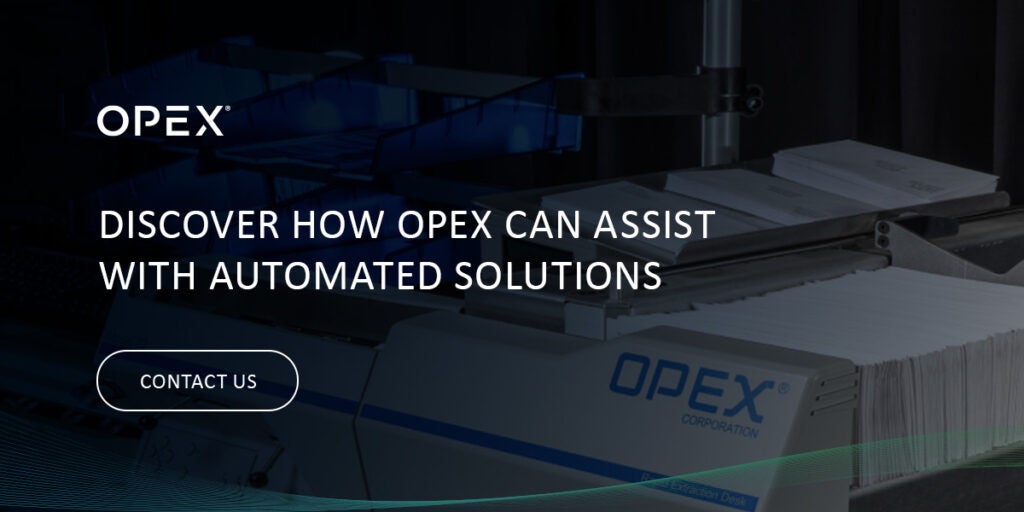Introduction
Organizations can rely on document imaging solutions to enhance efficiency, streamline workflows, and ensure long-lasting digital document retrieval. These systems empower informed decision-making and ensure teams can access vital historical documents for years to come.
As these systems become more popular, organizations must understand the various types available to choose the most suitable one for their applications.
What Is Document Imaging?
Document imaging is the process of converting paper documents into digital content. The digitization process empowers organizations to store and manage information in a digital archive, making it easier to retrieve information efficiently while reducing reliance on paper processes. High-quality imaging systems and software can organize your captured documents, enable content sharing, allow online access, and provide many benefits.
Enhanced efficiency: A significant advantage of document imaging is unlocking workflow efficiencies. Digitizing information allows users to access data whenever necessary while reducing the need to sort through paper files. Additionally, online access enhances accessibility, enabling team members to access information at any time, on any device, and in any location.
Improved security: Teams can choose among many security measures to protect sensitive information. Password-protected, encrypted, and access-controlled security measures ensure authorized users can retrieve information in a timely manner while prohibiting unauthorized access by third parties.
Streamlined collaboration: Digital processes foster collaboration by allowing users to share documents easily. Collaborators can leverage online tools to streamline digital conversations, use common expertise to uncover trends, and access historical and current data in a centralized location to make informed decisions.
Amplified disaster recovery: Relying on digital processes allows you to mitigate risks associated with physical damage from floods, fires, and other disasters. You can use cloud solutions to protect your information and store digital backups in multiple locations for additional disaster recovery and protection.
Reduced physical storage: Document imaging also saves space by reducing physical storage requirements, allowing organizations to minimize the presence of physical filing cabinets, folders, or storage rooms on the property. Digitization can also reduce the likelihood of misplaced documents. While people can misplace physical papers or file them into incorrect folders, digital information remains in the proper location, empowering faster retrieval.
Cost-effectiveness: Reducing physical storage can allow teams to reduce overhead spending. Rather than directing resources to paper supplies or storage space, teams can reallocate spending while enjoying reduced labor costs through reduced manual sorting.
Features to Look for in Document Imaging Systems
There are many document imaging systems on the market, each with unique capabilities and advanced features. However, the most reliable solutions offer critical features for enhancing operations, including:


- Scanning and capture: Scanning and capturing files is critical. Look for solutions that meet requirements, regulations and best practices for your industry. Additionally, find a system that empowers users to alter file formats when necessary.
- Search capabilities: Document file names are often inadequate for fast searching. Quality systems can provide various search options, such as modification dates, keyword targets, metadata, file types, or other identifying information.
- Document organization: An effective document imaging system streamlines the organization process. Consider features like customizable folder structures and tagging to categorize documents seamlessly. A system that supports version control and document history tracking can also be beneficial.
- Security and audit trail: Protecting digital information is critical for highlighting your business as trustworthy and secure. Your solution should allow you to set permissions, identify authorized users, implement security features, and view document access history.
- Online access: Teams that can access data from any device or location can further enhance productivity. Online accessibility can prompt collaboration and empower team members to complete work wherever they’re most productive.
- Software integration: Ideal solutions will seamlessly integrate with your existing systems. Many organizations use applications such as DocuSign, Microsoft Office, Payroll, and various internal systems, highlighting the need for compatible document imaging solutions.
Types of Document Imaging Solutions
With the immense capabilities and benefits of using a document imaging system, finding the one that can most impact your operations is important. Explore some of the most common types of document imaging solutions:
1. High-Speed Document Scanners
High-speed document scanners are comprehensive tools for processing large document batches. These systems work faster than standard models and can transform thousands of physical pieces of content into digital formats within hours.
High-speed document scanners are crucial for industries like healthcare, government, financial services, and insurance that need to capture hundreds or thousands of sheets with high efficiency. Depending on the model you choose, you can find high-speed scanners with extensive scanning throughput, automatic document feeders, image enhancement, and additional features.
2. Archive Scanning Solutions
Archive scanning solutions reduce physical storage requirements and improve searchability for enhanced efficiency. Organizations needing to store historical information rely on these systems to preserve original document integrity while empowering future decision-making and securely storing data. Archive scanners can deliver color accuracy, high resolution, and gentle handling to keep original documents pristine while making reliable digital copies.
3. Enterprise Content Management
Enterprise content management (ECM) is an umbrella term for the tools, processes, and strategies to capture, manage, store, and deliver business information. These systems empower teams to manage structured, unstructured, and semi-structured content in a centralized platform.
ECMs capture content from files, allowing workers to manage the digital content before storing and preserving. The system then delivers information to users when necessary.
4. Mail and Parcel Management
Mail and parcel management systems allow teams to convert snail mail into digital copies, track delivered mail, simplify returned mail processes, and enhance sorting for streamlined efficiency. These solutions free up team members, empowering them to engage in more critical tasks while ensuring accuracy.
5. Document and Mail Automation Solutions
Automated solutions lead to higher productivity and greater efficiency. Document and mail automation solutions allow you to scan documents, capture critical information, and minimize manual document handling. Depending on your needs, you can find systems to open mail, scan mixed document types, deliver shorter end-to-end processing times, complete high-speed sorting, and more.
OPEX® Digital Imaging Solutions
OPEX® offers a variety of digital imaging and automation solutions to streamline workflows and enhance efficiency:
- High-speed document scanners: OPEX high-speed scanners powered by CertainScan® software are capable of processing delicate and standard documents. Scanning operators input mixed-documents into the system, which then captures data to minimize prep and reduce data entry. The OPEX Gemini® Right-SpeedTM scanner transitions between high and low scanner speeds based on the job.
- Archive scanning: These scanners can handle documents of various sizes and formats and are powered by CertainScan software for robust security. Falcon®+ One-Touch scanners offer high-volume document processing operations and deliver continuous document feeder capabilities for streamlined processing.
- Mail and parcel management: Falcon®+ RED™ is a smart mail handling solution that combines mail opening, contents extraction, and scanning into one streamlined workflow. This system minimizes preparation with One-Touch scanning, can sort up to nine page types when scanning, and reduces manual sorting while enhancing categorization.
- Document and mail automation: Solutions like Gemini Right-Speed scanner can transform workflows by offering adjustable speeds, minimizing preparation, and ensuring precision. Gemini offers media detection, a rescan feeder, a high-quality imager, and software compatibility for maximum impact.
Discover How OPEX Can Assist with Automated Solutions
OPEX has deep industry knowledge and 50 years of experience delivering automation solutions to businesses. The professional team at OPEX strives to improve your operations with cost-effective and time-saving solutions you can trust. Our high-quality document imaging solutions suit a range of applications across industries, so you can find the system you need.
Simplify document management with imaging solutions from OPEX. Explore our solutions or contact a representative for more information today.
Other Resources You Might Find Helpful
Record Partners Provides High-Volume Critical Record Digitization with New Technology
Seamless Integration and Future Ready Automation with AI
Leon County Supervisor of Elections Overhauls Its Manual Document Process, Saving Money for Taxpayers
An Post Commerce Business Solutions Implements OPEX® Scanning Technology, Achieving a 33% Increase in
The Imagine Group: Accelerating the Data Entry Process for Returned Mail with a Solution from OPEX® and CPT
Medical Record Scanning Demonstration with the OPEX Falcon+ Scanner
Built for Compliance: How Modern Scanning Systems Deliver Operational Excellence
OPEX® Falcon+® RED® One-Touch Scanning Envelope Opener
Swiss Post Solutions Delivers Innovation and Automation to Clients Leveraging The OPEX Falcon+® RED™
GTL Implements Automation & AI to Transform the Claims Handling Process
NEXT LEVEL AUTOMATION
Unlock Operational Efficiency with OPEX
OPEX is powering the future of automation. Contact us to learn more about how our vertically integrated automated solutions can help take your business to new heights.
